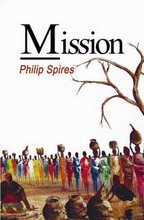Alicante’s ADDA hosted the Orchestra and Chorus of RTVE in a concert entitled “Don Juan and Prince Igor”. The title rather ignored the first half, which featured three works, two choral pieces by Brahms and Nielsen’s Flute Concerto. I will therefore describe the second half first.
Twenty minutes was the listed performance time for Richard Strauss’s tone poem, Don Juan. It is a race through the biography of a character who occupied Daponte and Mozart for a couple of hours and Lord Byron for a lifetime. And in this performance, these 20 minutes, absolutely whizzed by. Richard Strauss’s orchestration in this symphonic poem is so massive that the audience members in the first few rows regularly had to duck to avoid the kitchen sinks.
But what subtlety lies within this apparently broad brush! From the second row, I could see the percussionists behind the first violins and was astounded to hear a triangle played softly rising above an orchestral tutti. Richard Strauss certainly knew how to write for orchestra, and this performance, at speed, was virtuosic. As the good times roll by, we know the character is going to receive his come-uppance, and that duly arrives with the finality of pizzicato marking a truly quiet end to a raucous life.
And then we launched into Borodin’s Polovtsian Dances from Prince Igor. Now this is a real show-stopper. Not only does it present a thoroughly familiar tune in its opening passages and at the end, the Gliding Dance of the Maidens, a tune made famous by its incorporation into Kismet in Hollywood, but its upbeat central section is it itself a pop classic. Someone behind us in the audience sang along with the RTVE chorus with the words of “Stranger in Paradise”, but it was not disturbing, because the volume of sound produced on stage in this work is immense.
We did have an encore. It was another pop classic in the form of the chorus of the Hebrew Slaves from Nabucco. It all makes musical sense, if you can imagine an entire race incarcerated in a prehistorical concentration camp and faced with extermination joining in with a waltz sung in a major key. I suppose faith is powerful.
The first half started with the two with two significant works by Brahms. In Nänie, Op. 82, we are presented with a rather funereal atmosphere that anticipates some of Brahms’s later works, but without the obvious lyricism. In Schicksalslied, Op.54 we have full blown Brahms in mid-career. Brahms, complete with a smoker’s shortness of breath, presents his characteristic short phrase – pause – short phrase – pause (repeat) structure that he so commonly used. My personal theory is that he liked to sing along with his work, but his lungs could no longer sustain a long phrase.
And so to the problematic piece in the program. Make
of this what you will – and our soloist, whose name is Mónica Raga, resident of
the RTV Orchestra, did just that. The playing of this enigmatic work was
utterly breathtaking, nothing less than perfect, even inspired. And this
despite conductor Christoph König
at one point letting go of his baton and hitting her mid-stream. Not a note was
lost. Quite brilliant.
But Nielsen’s Flute Concerto is a late work and the composer,
already at work on the Sixth (and
equally problematic) Symphony presents his audience with a piece that vacillates
between serious and tender, between cynical and sincere throughout its two
movements. One wonders where Carl Nielsen had convinced himself by 1926 that a composer’s
life was the pits and his offerings were without worth. In his own words, he
wrote, “If I could live my life again, I would chase any thoughts of Art out of
my head and be apprenticed to a merchant or pursue some other useful trade the
results of which could be visible in the end ...” This concerto, neither
modern nor traditional, neither the tonal nor abstract, neither serious or
frivolous, presents a challenge for an audience and a soloist. Mónica
Raga truly rose to the occasion, and she made sense of this enigmatic work. It is, however, an enigma worth revisiting.






